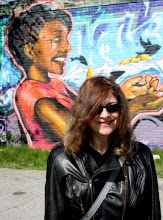
Movies have long been a source of fashion inspiration, but movies about clothing design generally don’t wear well. They tend toward the fanciful (the 1956 Funny Face) or the farcical (The Devil Wears Prada, Sex and the City), assaulting the eyes with ridiculous getups pretending to be haute couture.
Unlike the fashion movies that focus on spectacle, Coco Before Chanel, an attractive French biopic about the early years of legendary designer Coco Chanel, is about the origins of style. Writer-director Anne Fontaine’s screenplay illustrates the way Chanel’s hardscrabble early life — she was raised in an orphanage after the death of her mother — informed her practical, accessible fashion ideas. Rejecting the tight corsets, puffy gowns and feathered hats favored in the early 1900s, she pioneered sleek, sophisticated, comfortable clothes: trousers, little black dresses, and her legendary boxy, collarless suit, enhanced by ropes of chains and faux pearls. The clothes were scandalously simple in an era of luxury and excess, and today seem as modern and modish as the day they were created.
Coco, born Gabrielle Chanel in 1883 and taught to sew by nuns in the orphanage, is played by all-purpose gamine Audrey Tautou, who wears an expression of feral determination, with a smile seen only once, when she catches her first glimpse of the sea. Gabrielle acquires her nickname from a popular song about a lost dog that she sang in clubs in Vichy and Moulins (though Chanel, with wry self-awareness, said ‘Coco’ was short for cocotte, the French word for “kept woman.”) After her sister and singing partner Adrienne (Marie Gillain) runs off to Paris with an aristocratic paramour, Coco shows up uninvited at the country estate of her sometime lover, wealthy playboy Etienne Balsan (Benoit Poelvoorde), who keeps her as a closet concubine, mostly hidden away from his rich friends.
She confounds Balsan with her insistence on restyling his clothes into fetching, man-styled women’s riding outfits. She becomes a designer when Balsan’s actress lover (Emanuelle Devos) notices her cleverness with clothes and enlists her to design her hats and costumes.
Though Chanel had many lovers, she never married, and in the movie, Coco has little use for love, observing that “a woman in love is like a begging dog.” Love does find her briefly, when handsome Englishman Arthur “Boy” Capel (Alessandro Nivola), romances her and breaks her heart, though it quickly recovers when he offers to finance her design business.
Except for a silly scene at the end, in which the mature Chanel oversees a cascade of runway models, the movie doesn’t cover Chanel’s famous years, let alone her notoriety when she was suspected of being a Nazi collaborateur because of an affair with a German officer. Some viewers may wonder why the early life of Coco Chanel should interest them at all. If you're not the kind of person who is dying to learn where Chanel got the idea for horizontal-striped tunics (fisherman she observed at the seashore) or the inspiration for her pioneering use of jersey (Boy’s polo shirts), this is not your movie. For dedicated followers of fashion, it's an interesting, nicely nuanced biography with exquisite, desirable clothes and settings.

No comments:
Post a Comment